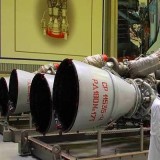Flash News: US Air Force’s 18th Wing Conducts Emergency Rapid Response Exercise at Kadena Air Base in Japan

{loadposition bannertop}
{loadposition sidebarpub}
The U.S. Air Force’s 18th Wing, stationed at Kadena Air Base in Okinawa, Japan, successfully conducted an 8-day Emergency Rapid Response Exercise from January 8-15, 2025. The exercise was designed to assess the wing’s capabilities in rapidly deploying forces, sustaining operations under degraded conditions, and enhancing their agile combat employment concepts. This operational drill aimed to ensure that the 18th Wing is prepared for quick-response contingency operations across the Pacific region, contributing to the stability and security of the U.S. and its allies.Follow Army Recognition on Google News at this link
A U.S. Air Force F-16C Fighting Falcon assigned to the 77th Expeditionary Fighter Squadron, Shaw Air Force Base, South Carolina, takes off in support of a routine readiness exercise at Kadena Air Base, Japan. (Picture source: U.S. DoD)
In the opening days of the exercise, the 18th Wing demonstrated its operational readiness by simulating the deployment of personnel, cargo, and aircraft in response to a mock contingency scenario. The wing’s personnel and resources were rapidly mobilized to mimic the procedures of forward power projection. This phase of the exercise was critical in highlighting the operational speed and the logistical capabilities of the base in a crisis scenario.
The exercise’s primary objective was to simulate real-world contingency operations, such as emergency deployment, forward power projection, and tactical combat casualty care, all of which are essential for ensuring readiness in the face of unforeseen military engagements. Key areas of focus included the deployment of personnel to forward operating bases, the rapid transport of equipment, and the management of resources under time-sensitive conditions. Through the simulation, the 18th Wing tested its emergency response procedures, pinpointing areas for improvement in its operational workflows. The exercise also stressed the need for agility in responding to short- or no-notice contingencies, a crucial capability for maintaining regional security.
As the exercise progressed into its second week, the scenarios evolved to reflect a wider range of emergency conditions, placing a greater strain on the wing’s personnel and equipment. The tasks became progressively more complex, including managing multiple simultaneous emergencies, conducting airpower projection, and ensuring the ability to continue operations in degraded conditions. In these later phases, the 18th Wing’s leadership ensured that the Airmen were prepared to adapt to changing circumstances while maintaining operational effectiveness under duress. The exercise tested a variety of capabilities, from air mobility and aircraft maintenance to facility security and casualty care. The scenario progression provided valuable feedback on improving contingency planning and streamlining operational responses to time-critical situations.
Kadena Air Base plays a crucial role in maintaining regional stability in the Asia-Pacific. As the largest U.S. combat wing in the region, the 18th Wing provides essential capabilities for forward deployment, humanitarian relief, and defense of U.S. allies. With a strategic location in Okinawa, Kadena Air Base serves as a key staging point for airpower projection, regional defense, and disaster response operations. The U.S.-Japan security alliance, formed under the Treaty of Mutual Cooperation and Security in 1960, forms the foundation of the 18th Wing’s mission. As a central hub for U.S. military operations in the Pacific, the wing’s role extends beyond combat readiness to include supporting regional peace and assisting in disaster relief efforts, such as those in the aftermath of the 2004 Indian Ocean tsunami.
The 18th Wing operates a comprehensive array of aircraft that supports its multifaceted mission, which spans deterrence, combat operations, and humanitarian assistance. The wing’s fleet includes F-15C/D Eagles for air-to-air combat missions, KC-135 Stratotankers for air refueling operations, E-3 AWACS for airborne command and control, and HH-60 Pave Hawk helicopters for combat search and rescue operations. This versatile air fleet enables the 18th Wing to rapidly project airpower and respond to any contingencies across the Pacific. The wing’s personnel, numbering more than 7,500 across five groups (operations, maintenance, mission support, civil engineering, and medical), ensure seamless operations across a wide range of responsibilities. These include aircraft maintenance, munitions storage, base operations, civil engineering, and medical care, which are vital for sustaining combat airpower and ensuring the well-being of personnel stationed at Kadena.
The 18th Wing’s Mission Support Group, the largest such unit in the Air Force, provides a wide range of essential services, from combat support to morale and welfare for personnel and families. Its responsibilities include managing the base’s infrastructure, logistics, and personnel services, all of which are critical to the wing’s operational success.
The successful execution of the 8-day emergency rapid response exercise demonstrates the 18th Wing’s preparedness to deploy forces rapidly and maintain operational effectiveness under challenging conditions. These types of training exercises are invaluable in ensuring that Airmen remain ready to respond to any emergency or contingency, whether it involves combat operations, humanitarian missions, or regional defense.
The 18th Wing’s diverse mission and strategic location at Kadena Air Base solidify its role as a key player in regional stability and the broader defense of U.S. interests in the Pacific. As the largest combat wing in the Air Force, its continued excellence in training, operations, and response readiness remains essential to the U.S. military’s objectives in the Asia-Pacific region.

{loadposition bannertop}
{loadposition sidebarpub}
The U.S. Air Force’s 18th Wing, stationed at Kadena Air Base in Okinawa, Japan, successfully conducted an 8-day Emergency Rapid Response Exercise from January 8-15, 2025. The exercise was designed to assess the wing’s capabilities in rapidly deploying forces, sustaining operations under degraded conditions, and enhancing their agile combat employment concepts. This operational drill aimed to ensure that the 18th Wing is prepared for quick-response contingency operations across the Pacific region, contributing to the stability and security of the U.S. and its allies.
Follow Army Recognition on Google News at this link
A U.S. Air Force F-16C Fighting Falcon assigned to the 77th Expeditionary Fighter Squadron, Shaw Air Force Base, South Carolina, takes off in support of a routine readiness exercise at Kadena Air Base, Japan. (Picture source: U.S. DoD)
In the opening days of the exercise, the 18th Wing demonstrated its operational readiness by simulating the deployment of personnel, cargo, and aircraft in response to a mock contingency scenario. The wing’s personnel and resources were rapidly mobilized to mimic the procedures of forward power projection. This phase of the exercise was critical in highlighting the operational speed and the logistical capabilities of the base in a crisis scenario.
The exercise’s primary objective was to simulate real-world contingency operations, such as emergency deployment, forward power projection, and tactical combat casualty care, all of which are essential for ensuring readiness in the face of unforeseen military engagements. Key areas of focus included the deployment of personnel to forward operating bases, the rapid transport of equipment, and the management of resources under time-sensitive conditions. Through the simulation, the 18th Wing tested its emergency response procedures, pinpointing areas for improvement in its operational workflows. The exercise also stressed the need for agility in responding to short- or no-notice contingencies, a crucial capability for maintaining regional security.
As the exercise progressed into its second week, the scenarios evolved to reflect a wider range of emergency conditions, placing a greater strain on the wing’s personnel and equipment. The tasks became progressively more complex, including managing multiple simultaneous emergencies, conducting airpower projection, and ensuring the ability to continue operations in degraded conditions. In these later phases, the 18th Wing’s leadership ensured that the Airmen were prepared to adapt to changing circumstances while maintaining operational effectiveness under duress. The exercise tested a variety of capabilities, from air mobility and aircraft maintenance to facility security and casualty care. The scenario progression provided valuable feedback on improving contingency planning and streamlining operational responses to time-critical situations.
Kadena Air Base plays a crucial role in maintaining regional stability in the Asia-Pacific. As the largest U.S. combat wing in the region, the 18th Wing provides essential capabilities for forward deployment, humanitarian relief, and defense of U.S. allies. With a strategic location in Okinawa, Kadena Air Base serves as a key staging point for airpower projection, regional defense, and disaster response operations. The U.S.-Japan security alliance, formed under the Treaty of Mutual Cooperation and Security in 1960, forms the foundation of the 18th Wing’s mission. As a central hub for U.S. military operations in the Pacific, the wing’s role extends beyond combat readiness to include supporting regional peace and assisting in disaster relief efforts, such as those in the aftermath of the 2004 Indian Ocean tsunami.
The 18th Wing operates a comprehensive array of aircraft that supports its multifaceted mission, which spans deterrence, combat operations, and humanitarian assistance. The wing’s fleet includes F-15C/D Eagles for air-to-air combat missions, KC-135 Stratotankers for air refueling operations, E-3 AWACS for airborne command and control, and HH-60 Pave Hawk helicopters for combat search and rescue operations. This versatile air fleet enables the 18th Wing to rapidly project airpower and respond to any contingencies across the Pacific. The wing’s personnel, numbering more than 7,500 across five groups (operations, maintenance, mission support, civil engineering, and medical), ensure seamless operations across a wide range of responsibilities. These include aircraft maintenance, munitions storage, base operations, civil engineering, and medical care, which are vital for sustaining combat airpower and ensuring the well-being of personnel stationed at Kadena.
The 18th Wing’s Mission Support Group, the largest such unit in the Air Force, provides a wide range of essential services, from combat support to morale and welfare for personnel and families. Its responsibilities include managing the base’s infrastructure, logistics, and personnel services, all of which are critical to the wing’s operational success.
The successful execution of the 8-day emergency rapid response exercise demonstrates the 18th Wing’s preparedness to deploy forces rapidly and maintain operational effectiveness under challenging conditions. These types of training exercises are invaluable in ensuring that Airmen remain ready to respond to any emergency or contingency, whether it involves combat operations, humanitarian missions, or regional defense.
The 18th Wing’s diverse mission and strategic location at Kadena Air Base solidify its role as a key player in regional stability and the broader defense of U.S. interests in the Pacific. As the largest combat wing in the Air Force, its continued excellence in training, operations, and response readiness remains essential to the U.S. military’s objectives in the Asia-Pacific region.




